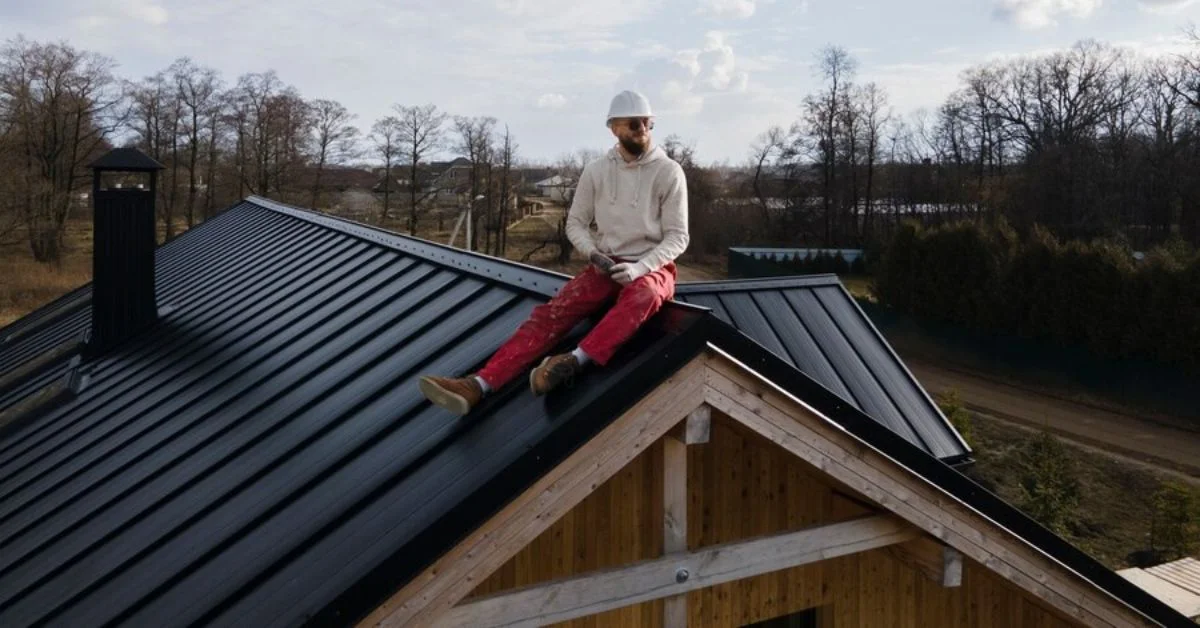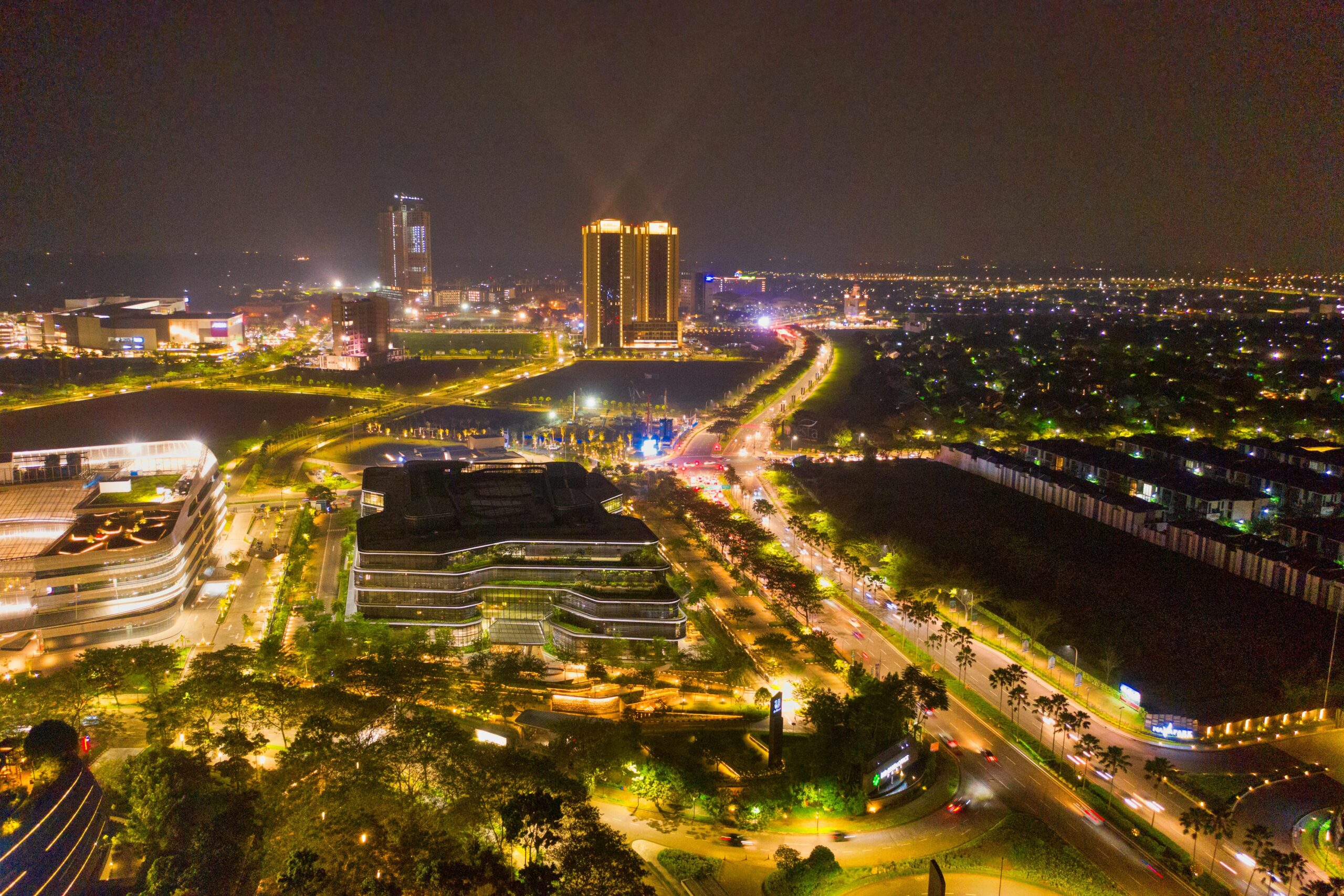REAL ESTATE
Comprehensive Insights into Roofing: Materials, Maintenance, and Modern Practices

Roofing is a critical component of building construction, serving as the primary barrier against environmental elements such as rain, snow, wind, and sun. The right roofing protects a structure and contributes significantly to its aesthetic appeal and energy efficiency. We will provide a detailed exploration of various roofing materials, maintenance strategies, and the latest advancements in roofing technology. Understanding these elements can help homeowners, builders, and developers make informed decisions about roofing selection and upkeep, ensuring longevity and functionality throughout a roof’s lifespan. If you are looking for a professional, contact J&J Roofing & Construction.
Understanding Different Roofing Materials
Choosing roofing materials is crucial as it affects the roof’s durability, cost, aesthetic appeal, and environmental impact. Common materials include asphalt shingles, metal, clay tiles, concrete tiles, and slate, each with distinct advantages and considerations.
Asphalt shingles are widely favored for their cost-effectiveness and ease of installation. They come in various colors and styles, allowing for flexible design options. However, they have a shorter lifespan than durable materials like metal or slate. On the other hand, metal roofing is known for its durability, longevity, and energy efficiency. It reflects solar radiant heat, which can help reduce cooling costs. It is also lightweight, which puts less stress on building structures.
Clay and concrete tiles are popular in regions with hot weather or where a Mediterranean look is desired. While both are durable and offer excellent fire resistance, clay tiles are lighter but more expensive than concrete tiles. Slate roofing is considered one of the most durable materials, with a lifespan exceeding 100 years. However, its high cost and the weight that requires a stronger roof structure make it less common.
Roofing Maintenance: Ensuring Longevity and Performance
Regular maintenance is vital to extend the life of a roof and prevent costly repairs. Maintenance practices vary based on the roofing material but generally include regular inspections, cleaning, and timely repairs.
Scheduled inspections should be conducted at least twice a year and after major weather events. These inspections help identify potential issues such as cracked shingles, rust on metal roofs, or broken tiles before they lead to more significant problems. Cleaning involves removing debris, such as leaves and branches, which can accumulate and retain moisture, leading to mold and mildew growth. Keeping gutters clean is also important to ensure proper drainage and prevent water accumulation on the roof.
For specific materials like asphalt shingles, checking for granule loss is crucial as it indicates aging and weathering. Metal roofs require checking for sealant failures and rust, especially around fasteners and seams. Replacing cracked or broken tiles for tile roofs is essential to maintain their protective function. Slate roofs demand careful handling; damaged or slipped slates should be replaced by professionals specializing in slate roofing to avoid further damage during repairs.
Modern Roofing Practices and Technological Advancements
The roofing industry has seen significant technological advancements that enhance roofs’ functionality and environmental sustainability. Innovations include cool roofing, green roofing, and the integration of solar technology.
Cool roofs are designed to reflect more sunlight and absorb less heat than standard roofs, which helps maintain cooler building temperatures, reducing the need for air conditioning and energy consumption. Materials typically used for cool roofs include reflective paint, highly reflective tiles, or shingles.
Green roofs, also known as living roofs, involve growing vegetation on rooftops, which provides benefits such as insulation, absorption of rainwater, and aid in reducing urban heat islands. They also improve air quality and provide green space for urban environments.
Solar roofing involves integrating photovoltaic cells as rooftop tiles or shingles that mimic traditional roofing materials. These solar roofs protect from the elements and generate electricity, significantly reducing a building’s energy costs.
Challenges in Roofing: Environmental Concerns and Installation Issues
Roofing projects face several challenges, including environmental concerns and installation complexities. The choice of materials and disposal methods can have significant environmental impacts. For example, asphalt shingles contribute substantial waste to landfills each year. Recycling these materials is possible, but it’s not always straightforward due to the layers and composites involved in roofing shingles.
Installation is another critical area where challenges often arise, particularly from improper installation practices that can drastically reduce a roof’s lifespan and efficiency. Installers must be trained in the specific types of roofing materials they work with to ensure correct installation. Poorly installed roofs can lead to leaks, increased energy costs, and the need for premature replacement.
Furthermore, safety remains a paramount concern during roof installations. The height and slope of roofs pose risks of falls and injuries, requiring strict adherence to safety regulations and the use of proper safety equipment. Ensuring all safety measures are in place is essential to protect workers and maintain a safe job site.
Roofing is a multifaceted aspect of building construction, with many materials to choose from and maintenance needs to consider. The evolution of roofings technology offers new opportunities for building efficient, sustainable, and aesthetically pleasing roofs. However, installation challenges, environmental impact, and maintenance require careful planning and consideration.
BUSINESS
Realestateview: Revolutionizing Property Searches

In the dynamic world of real estate, finding the perfect property can be a daunting task. This is where Realestateview steps in, offering a comprehensive platform that revolutionizes the way individuals search for properties.
The Importance of Realestateview
Finding Properties Easily
Gone are the days of endless property visits. Realestateview provides users with a streamlined approach to finding properties that match their criteria effortlessly.
Detailed Property Information
One of Realestateview’s standout features is its commitment to providing detailed property information. From square footage to neighborhood insights, users can make informed decisions.
How to Use Realestateview
Creating an Account
The first step to unlocking the full potential of Realestateview is creating a personalized account. This allows users to save preferences and receive tailored property recommendations.
Customizing Property Preferences
Realestateview empowers users by allowing them to customize their property preferences. From budget constraints to desired amenities, every detail matters.
Navigating the Platform
A user-friendly interface ensures that even those unfamiliar with online property searches can easily navigate Realestateview. The intuitive design simplifies the process.
Advanced Features
Interactive Maps
Discovering the perfect neighborhood is as crucial as finding the right property. Realestateview’s interactive maps provide a bird’s-eye view of potential areas.
Virtual Tours
Incorporating technology to the fullest, Realestateview offers virtual tours. Walk through a property from the comfort of your home, saving time and energy.
Benefits for Property Sellers
Increased Visibility
For property sellers, Realestateview opens doors to a vast audience. Increased visibility means higher chances of finding the right buyer.
Targeted Audience
Realestateview’s algorithms ensure that property listings reach a targeted audience, reducing the chances of irrelevant inquiries.
User Testimonials
Real Experiences
Discover how users have successfully found their dream homes through Realestateview. Real experiences highlight the platform’s effectiveness.
Success Stories
From first-time buyers to seasoned investors, Realestateview’s success stories showcase its versatility in catering to diverse needs.
Realestateview vs. Competitors
Points of Distinction
What sets Realestateview apart from competitors? Explore the unique features that give it a competitive edge.
User-Friendly Interface
Comparing user experiences, Realestate view consistently stands out for its user-friendly interface. Accessibility is key to its success.
Tips for Effectively Using Realestateview
Setting Notifications
Never miss out on a potential property. Setting notifications keeps users informed about new listings that match their criteria.
Utilizing Filters
Refine searches with filters. Whether it’s the number of bedrooms or proximity to schools, Realestateview’s filters make the search precise.
Saving Favorites
Save time by bookmarking favorite properties. Realestate view allows users to create a personalized list of potential homes.
Future Developments
Continuous Improvements
Realestateview is committed to continuous improvements. Stay tuned for upcoming features that will enhance the user experience.
Enhanced Features
Expect enhanced features that leverage the latest technology trends. Realestate view remains at the forefront of innovation.
Community Engagement
Forums and Discussions
Join discussions and forums within the Realestateview community. Exchange insights, tips, and experiences with fellow users.
Social Media Presence
Connect with Realestateview on social media for updates, property highlights, and community engagement.
Industry Impact
Changing the Real Estate Game
Realestateview isn’t just a platform; it’s a game-changer. Explore its impact on the real estate industry.
Empowering Consumers
By providing a wealth of information and tools, Realestate view empowers consumers to make informed decisions confidently.
Challenges and Solutions
Addressing User Concerns
Every platform faces challenges. Realestate view addresses user concerns promptly, ensuring a smooth experience.
Staying Ahead of Technology
In a rapidly evolving tech landscape, Realestateview stays ahead by embracing the latest innovations and trends.
Realestateview’s Commitment to Security
Protecting User Data
Security is a top priority for Realestateview. Discover the measures in place to protect user data and privacy.
Secure Transactions
Whether buying or selling, Realestate view ensures secure transactions, giving users peace of mind.
The Success Story of Realestateview
From Inception to Prominence
Trace the journey of Realestate view from its inception to becoming a prominent player in the real estate market.
Milestones and Achievements
Celebrate the milestones and achievements that mark Realestateview’s success story.
Conclusion
In the realm of real estate, where choices abound, Realestate view stands tall as a reliable, user-friendly, and innovative platform. Whether you’re a buyer or seller, this digital haven is reshaping how we approach property transactions.
ALSO READ: TOP SERVICES FOR BUILDERS TO SELL MORE HOMES
REAL ESTATE
Trump Real Estate Eyes WLFI Tokenization: A New Step for On-Chain Assets

World Liberty Financial, also known as WLFI, is making headlines with its announcement of plans to tokenize parts of Trump’s real estate portfolio. The initiative aims to move traditional real estate assets into the world of blockchain, opening new possibilities for digital property ownership. This step signals a major development in the relationship between real-world assets and blockchain technology. The news has sparked widespread interest, particularly because it links one of the world’s most recognized real estate brands with one of the fastest-growing trends in finance: tokenization. The move marks a significant turning point for those following Trump real estate on-chain innovations.
Project Overview
WLFI’s mission is to bring traditional assets, such as real estate, on-chain by transforming them into digital tokens. This process involves converting the ownership rights of properties into blockchain-based tokens that represent shares in those assets. It allows investors to own fractional portions of properties, creating a more accessible and flexible investment environment. The goal is to bridge the gap between traditional finance and decentralized technologies.
Zach Witkoff, an executive associated with the Trump Organization, has expressed enthusiasm about the collaboration with WLFI. He highlighted that tokenization offers new opportunities to reach a broader audience of investors. By using blockchain technology, ownership can be verified through smart contracts, ensuring transparency and security. Witkoff emphasized that this initiative reflects a forward-looking approach to real estate development and investment.
WLFI’s platform aims to digitize property ownership through the integration of smart contracts. These digital agreements automate processes like transfers, compliance checks, and profit distribution. Once a property is tokenized, it can be traded or invested in through digital exchanges, allowing investors to engage with the asset market without traditional barriers. The vision is to make real estate more liquid, efficient, and globally accessible.
Market Significance
The decision to tokenize Trump’s properties underlines a growing confidence in real-world asset (RWA) tokenization. In recent years, the tokenization of tangible assets has gained traction across sectors including real estate, art, and commodities. However, applying it to high-profile commercial properties brings a new level of legitimacy to the concept.
By working with established financial and real estate institutions, WLFI is demonstrating that tokenization is no longer just a niche idea in the crypto community. It is now becoming a recognized method for capital formation and investment. Institutional investors are paying close attention because it aligns with the demand for transparent and efficient asset management systems.
The potential market for real estate tokenization is enormous. Analysts estimate that billions of dollars in property value could eventually move onto blockchain networks. When a large name like Trump becomes part of the movement, it adds credibility and attracts investor interest. This step could also encourage other developers and financial institutions to explore similar blockchain-based solutions. As Tokenizer.Estate News and other platforms have covered, tokenization is emerging as one of the most important shifts in how assets are owned and traded globally.
Opportunities & Challenges
The tokenization of real estate offers several important benefits. One of the main advantages is liquidity. Traditional real estate investments often require large capital commitments and long holding periods. Tokenization allows property owners to divide assets into smaller, tradable shares. This makes it possible for investors to buy and sell portions of properties more easily. It also lowers the entry barrier, enabling small and medium investors to participate in markets that were once limited to wealthy individuals and large funds.
Another opportunity lies in the global reach of blockchain networks. Tokenized real estate can attract international investors without the need for complex cross-border arrangements. With digital platforms, investors can manage and trade their holdings in real time. Transparency is also a key feature. Since all transactions are recorded on the blockchain, it becomes easier to verify ownership and track asset performance.
However, the path toward full adoption is not without challenges. Regulatory compliance remains one of the most significant concerns. Tokenized real estate must adhere to both securities and property laws, which vary across jurisdictions. Without clear legal frameworks, projects like WLFI’s could face delays or limitations in certain regions.
Valuation is another issue. Determining the fair market value of tokenized assets requires consistent standards and trusted data sources. Unlike traditional financial instruments, digital tokens depend on both market sentiment and asset fundamentals. As a result, price stability can be harder to maintain.
Security is also essential. Smart contracts must be carefully designed to prevent errors or vulnerabilities that could compromise transactions. Cybersecurity and investor protection will play major roles in the success of tokenized projects. Lastly, public perception and education are critical. Many potential investors are still unfamiliar with blockchain-based investment models, so building trust and understanding will take time.
Despite these hurdles, the potential upside is significant. WLFI’s collaboration with Trump real estate could encourage regulators to develop clearer frameworks for tokenized assets. It could also drive innovation in financial technology and real estate management.
Conclusion
WLFI’s decision to explore the tokenization of Trump’s real estate assets represents a bold step toward integrating blockchain technology into one of the world’s most traditional industries. The initiative combines the reputation of a global real estate brand with the efficiency of digital finance. If successful, it could set a precedent for how luxury and commercial properties are managed and traded in the future.The outcome will depend on several factors, including regulatory approval, investor interest, and market stability. Nonetheless, the move highlights a growing global trend toward digitizing real-world assets and creating new ways to engage with property investment. As Tokenizer.Estate News continues to report, the future of tokenized real estate looks increasingly dynamic. The WLFI-Trump initiative may serve as a model for the next wave of real estate innovation, where ownership and investment are not confined by geography but powered by blockchain technology.
BUSINESS
Navigating Your Home Buying Journey with a Trusted Mortgage Professional in North Carolina

In the picturesque landscapes of North Carolina, from the rolling Appalachian Mountains to the serene Atlantic coastlines, buying a home is a dream for many. Yet, the path to homeownership can often feel like navigating through a dense fog without a compass. This is where the expertise of a trusted mortgage professional in North Carolina becomes invaluable. A knowledgeable guide can not only clear the mist but also illuminate the path, ensuring your journey to securing the perfect home is as smooth and successful as possible.
The Role of a Trusted Mortgage Professional
A mortgage professional does more than just process loans; they are advisors, strategists, and advocates for your homeownership dreams. In North Carolina, where the real estate market fluctuates from bustling urban centers like Charlotte and Raleigh to tranquil rural areas, having a trusted advisor can make a significant difference. They understand the nuances of local markets, the specifics of state regulations, and how to navigate the diverse landscape of loan products to find the best fit for your unique situation.
Why Trust Is Paramount
Trust is the cornerstone of any relationship, especially when it involves significant financial decisions. A trusted mortgage professional in North Carolina earns this trust by:
- Demonstrating Expertise: They possess a deep understanding of the mortgage industry, including various loan types, interest rates, and lending guidelines.
- Providing Transparent Communication: Every step of the mortgage process is explained clearly, ensuring you are well-informed and comfortable with your decisions.
- Offering Personalized Solutions: Recognizing that every homebuyer’s situation is unique, they tailor their recommendations to align with your financial goals and needs.
- Advocating on Your Behalf: Whether negotiating terms with lenders or resolving unexpected issues, they work tirelessly to advocate for your best interests.
How to Find a Trusted Mortgage Professional in North Carolina
1. Ask for Referrals: Begin by asking friends, family, and real estate agents for recommendations. Personal testimonials can provide insights into a professional’s reliability and the quality of their service.
2. Check Credentials and Reviews: Verify their licensing through the Nationwide Mortgage Licensing System (NMLS) and read online reviews to gauge their reputation and client satisfaction.
3. Schedule Consultations: Meeting potential mortgage professionals allows you to assess their expertise, communication style, and whether they understand your needs and goals.
4. Assess Their Network: A well-connected mortgage professional has a robust network of lenders, real estate agents, and other professionals. This network can be instrumental in finding the best loan products and facilitating a smooth home buying process.
The Journey with a Trusted Mortgage Professional
Working with a trusted mortgage professional in North Carolina involves several key steps:
- Initial Consultation: Discuss your homeownership goals, financial situation, and any concerns. This is the time to ask questions and evaluate their expertise and compatibility with your needs.
- Pre-approval Process: They will guide you through obtaining pre-approval, a crucial step that strengthens your position as a buyer and clarifies your budget.
- Loan Selection: Based on your financial profile and goals, they will present the most suitable loan options, explaining the pros and cons of each.
- Application and Processing: They oversee the application process, ensuring all paperwork is complete and submitted promptly, and keep you updated on the progress.
- Closing: Even as you approach closing, your mortgage professional remains by your side, ready to address any last-minute queries or concerns.
The Impact of Local Expertise
A trusted mortgage professional in North Carolina brings invaluable local expertise to your home buying journey. They are not just familiar with state-specific regulations but understand how local economic trends, property values, and community developments can impact your investment. This local insight can be crucial in making informed decisions, whether you’re a first-time buyer or looking to refinance or invest in property.
Conclusion: Your Partner in Homeownership
The journey to homeownership, especially in a market as diverse as North Carolina’s, can be complex and challenging. However, with a trusted mortgage professional by your side, the path becomes clearer and more navigable. Their expertise, advocacy, and personalized guidance can transform the home buying process from daunting to empowering. By choosing the right partner, you’re not just making a financial transaction; you’re laying the foundation for your future home and all the memories it will hold. In the end, the right mortgage professional doesn’t just help you buy a house—they help you find your way home.

 ENTERTAINMENT3 weeks ago
ENTERTAINMENT3 weeks agoExploring the Kristen Archives: A Treasure Trove of Erotica and More

 LIFESTYLE9 months ago
LIFESTYLE9 months agoThe Disciplinary Wives Club: Spanking for Love, Not Punishment

 GENERAL5 months ago
GENERAL5 months ago5 Factors That Affect Tattoo Removal Success

 TECHNOLOGY9 months ago
TECHNOLOGY9 months agoBlog Arcy Art: Where Architecture Meets Art

 LIFESTYLE2 months ago
LIFESTYLE2 months agoWho Is Sandra Orlow?

 HEALTH8 months ago
HEALTH8 months agoHappy Hippo Kratom Reviews: Read Before You Buy!

 BUSINESS9 months ago
BUSINESS9 months agoBrand Visibility with Imprint Now and Custom Poly Mailers

 TECHNOLOGY7 months ago
TECHNOLOGY7 months agoDizipal 608: The Tech Revolution Redefined












